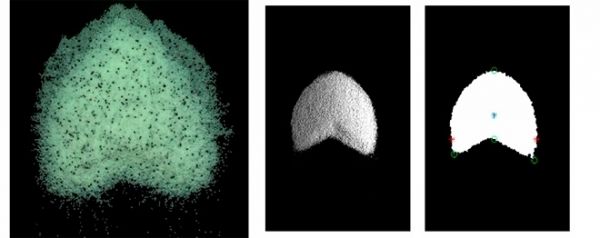Crescent-shaped dunes called barchans are structures that appear in a wide variety of environments, including beaches and deserts, riverbeds and the seafloor, inside water pipes and oil pipelines, and on the surface of Mars and other sandy planets with an atmosphere.
Despite differences in scale varying from ten-centimeter ripples for underwater dunes to kilometer-high mountains for Martian dunes, the dynamics of barchan formation and motion appear to be highly similar everywhere.
Research conducted at the University of Campinas (UNICAMP) in Brazil with FAPESP’s support helps clarify the dynamics of aquatic dunes. The results can also contribute, for example, to a better understanding of the topography of Mars and hence increase the probability of success in missions to this planet or to the optimization and cost effectiveness of oil flows.
“Barchans are crescent-shaped dunes that result from interaction between granular matter, typically sand, and the flow of a fluid such as gas or liquid under predominantly unidirectional flow conditions. The two horns of the crescent face in the direction of the fluid flow,” Erick de Moraes Franklin, one of the authors of the research, told Agência FAPESP.
Continue reading at Agência FAPESP
Image via Agência FAPESP


